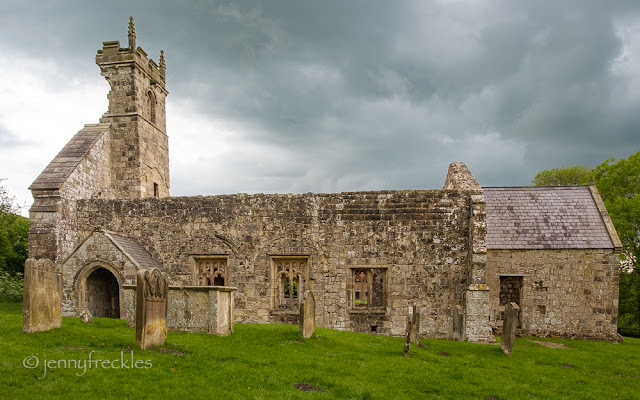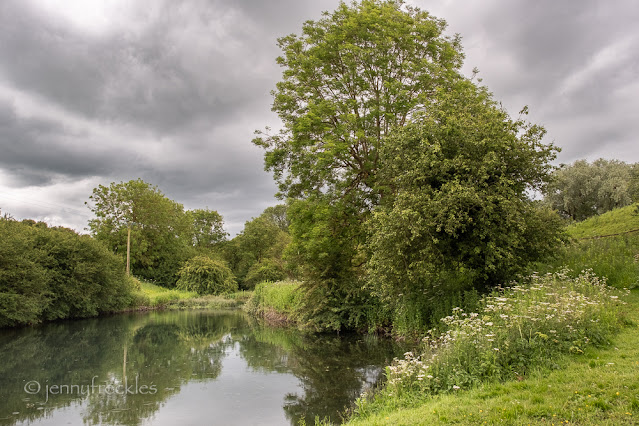Out of curiosity, we stopped to explore the deserted medieval village of Wharram Percy. There are an estimated 3000 or so deserted villages in Britain, of which Wharram Percy is perhaps the most well-known. It has been subject to numerous archeological digs and some reconstruction, to better understand what life was like here and why it was eventually deserted. It was continuously occupied for some 600 years from the 9th or 10th century. In the 12th and 13th centuries it was a thriving village, home to the noble Percy family. In the 1300s the Percy family were struck by misfortune, with no male heir, and raids by the Scots made life difficult. By 1323, two thirds of the land was uncultivated. In the late 1300s Britain was devasted by the plague - the Black Death. Estimates vary for how many people were killed, but it was at least 20% of the population and some put the death toll much higher. The Yorkshire area was ravaged by the disease, spreading north from London and also arriving by ship in the Humber ports. A switch from arable to sheep farming in the 1400s meant that fewer villagers were needed to farm the manorial lands and evictions were commonplace. By the early 1600s, the village was abandoned.
There isn't much to see really. The building in the first photo is part of a post-medieval farmhouse, rebuilt in 1807. Part of it was demolished in 1845 and what remained was used as cottages for agricultural labourers until 1976. Rootling around apparently reveals the grassed over foundations of two manor houses and some 40 peasant longhouses but, given that it was raining steadily, I didn't do much rootling around!
Part of the church (St Martin's) is still standing and it apparently continued to be used into the 17th century.
Beyond the church is a reconstructed mill pond. During the course of the village's history, there were at least two documented watermills (presumably used for grinding corn)
It's a fascinating place and, on a nicer day, I might have explored more widely. It's very atmospheric, thinking of all the people who once lived and worked here in this farming community.
There is more information on several pages on the English Heritage website HERE.





I didn’t realise that there were so many deserted villages in Britain! That surprised me!
ReplyDeleteThe only other deserted village that I know of, is Tyneham in Dorset, which was evacuated in 1943 because the area was needed for military training. After the war the villagers were not allowed to return. The Ministry of Defence still own it. The village is open to visitors at certain times and we visited a few years ago. You can see the original school, church, ( both restored ), terraced houses etc and there are exhibitions to view.
The site of the village of Clopton is just a short bike-ride from here. A very similar story, Black Death and a change to sheep farming. Not much left now apart from some bumps and dips on a grassy slope. I would, of course, have made a beeline for that church ruin!
ReplyDeleteI was wondering if the church ruin was de-consecrated. But then I saw the gravestones, and thought, somewhere there are records about who was buried there. Maybe...
ReplyDeleteSo beautiful and so poignant! Wonderful pictures!
ReplyDeleteI wonder who owns the land now?
ReplyDeleteLovely photos!
ReplyDeleteIt feels ghostly.
ReplyDelete